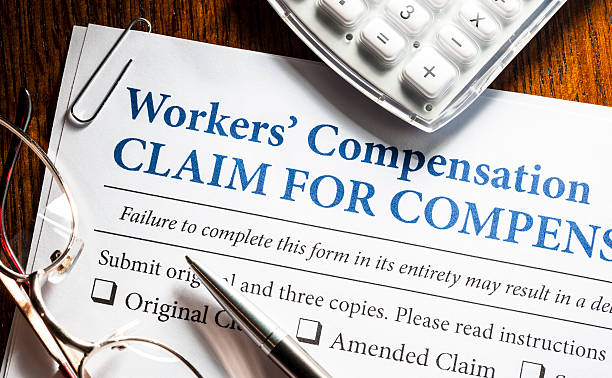Workplace accidents can be devastating, leading to injuries, lost wages, and emotional distress. When an accident occurs, determining fault is crucial for employees seeking compensation and employers looking to minimize liability.
In this blog post, we’ll explore the key considerations for proving fault in a workplace accident under US employment law.
Contents
Understanding Workplace Accidents
A workplace accident is any unintended event that occurs in the course of employment, resulting in injury or illness to an employee. These accidents can range from slips and falls to machinery malfunctions and exposure to hazardous materials. Regardless of the type of accident, it’s essential to understand the legal framework surrounding workplace safety and liability.
Employer Responsibilities
Under US employment law, employers have a duty to provide a safe working environment for their employees. This includes ensuring that the workplace is free from recognized hazards, providing adequate training and supervision, and maintaining equipment in good working order. The Occupational Safety and Health Administration (OSHA) sets and enforces standards for workplace safety, and employers must comply with these regulations. Failure to meet these obligations can result in liability for workplace accidents.
Employee Responsibilities
While employers have a duty to ensure workplace safety, employees also have responsibilities. Employees must follow safety protocols, use provided safety equipment, and report any hazards or accidents to their supervisors. They should also attend safety training sessions and familiarize themselves with emergency procedures. Failure to do so can impact an employee’s ability to prove fault in a workplace accident.
Proving Fault
Proving fault in a workplace accident can be complex, requiring a thorough investigation and analysis of the facts. Key considerations include:
1. Negligence:
To prove fault, an employee must demonstrate that the employer was negligent in their duty to provide a safe working environment. This may involve showing that the employer failed to address known hazards, provide adequate training, or maintain equipment. Negligence can also occur if an employer fails to follow industry standards or OSHA regulations.
2. Causation:
The employee must also establish that the employer’s negligence directly caused the accident and resulting injuries. This can be challenging, particularly if there were multiple factors contributing to the accident. For example, if an employee was injured by a malfunctioning machine, they would need to show that the employer’s failure to maintain the machine was the direct cause of the accident.
3. Damages:
Finally, the employee must prove that they suffered damages as a result of the accident, such as medical expenses, lost wages, or pain and suffering. Documenting these damages through medical records, wage statements, and other evidence is crucial for building a strong case.
Expert Guidance
Navigating the legal complexities of workplace accidents can be daunting for both employees and employers. Seeking guidance from experienced professionals can be invaluable in understanding rights, responsibilities, and strategies for proving fault. Online communities provide a platform for connecting with experts and accessing resources related to employment law and workplace safety. These communities offer a wealth of knowledge and support, allowing individuals to ask questions, share experiences, and learn from others who have faced similar challenges.
Accident Investigation
Conducting a thorough accident investigation is essential for gathering evidence and determining fault. This may involve interviewing witnesses, reviewing security footage, and analyzing equipment and safety records. Employers should have established procedures for investigating accidents and documenting findings. A comprehensive investigation can help identify the root cause of the accident and prevent future occurrences.
Reporting Requirements
US employment law also imposes reporting requirements for workplace accidents. Employers must report certain accidents to OSHA and maintain records of all accidents and injuries. Reportable incidents include fatalities, hospitalizations, amputations, and losses of an eye. Employers must also keep a record of all work-related injuries and illnesses, regardless of severity. Failure to comply with these requirements can result in penalties and may be used as evidence of negligence in fault determinations.
Workers’ Compensation
In most cases, employees who are injured in workplace accidents are entitled to workers’ compensation benefits, regardless of fault. These benefits can include medical expenses, lost wages, and disability payments. Workers’ compensation is a no-fault system, meaning that employees can receive benefits without proving that their employer was negligent. However, workers’ compensation does not preclude employees from pursuing additional legal action if they believe their employer was negligent.
Legal Action
If an employee believes that their employer’s negligence caused their workplace accident, they may choose to pursue legal action. This can involve filing a personal injury lawsuit seeking damages for medical expenses, lost wages, pain and suffering, and other losses. Proving fault in these cases can be challenging, requiring significant evidence and legal expertise. Employees may need to consult with experienced attorneys who specialize in workplace accidents and personal injury law.
Employers can also face legal action from government agencies, such as OSHA, for failing to comply with safety regulations. OSHA can conduct investigations, issue citations, and impose penalties on employers who violate safety standards. In some cases, criminal charges may be brought against employers whose negligence results in serious injuries or fatalities.
Preventing Workplace Accidents
While proving fault is important for seeking compensation and holding negligent parties accountable, preventing workplace accidents should be the top priority for both employers and employees.
Employers can take proactive steps to promote safety, such as:
- Conducting regular safety audits and risk assessments
- Providing comprehensive safety training and education
- Implementing and enforcing safety policies and procedures
- Maintaining equipment and machinery in good working order
- Encouraging open communication and reporting of safety concerns
Employees can also contribute to a safer workplace by:
- Following safety protocols and using provided safety equipment
- Reporting hazards and accidents promptly
- Participating in safety training and meetings
- Maintaining a clean and organized work area
- Looking out for the safety of themselves and their coworkers
By working together to prioritize safety, employers and employees can reduce the risk of workplace accidents and create a culture of safety and well-being.
The Role of Employment Law Forums
Employment law forums are essential for navigating the complexities of workplace accidents and employment law. These communities enable employees, employers, and legal professionals to:
- Access Resources: Find articles, updates, and expert opinions on employment law and workplace safety.
- Get Advice: Ask questions and receive guidance from experienced professionals and peers.
- Stay Informed: Keep up-to-date with the latest legal developments and best practices.
- Find Support: Connect with others facing similar challenges for encouragement and advice.
- Learn Rights and Responsibilities: Understand legal protections and obligations under US employment law.
While invaluable, these forums are not substitutes for professional legal advice. For specific legal issues, consulting a qualified attorney is recommended.
Conclusion
Proving fault in a workplace accident is a complex process that requires careful investigation, analysis, and legal knowledge. Employers and employees alike should understand their rights and responsibilities under US employment law and take steps to promote workplace safety. By seeking expert guidance, conducting thorough investigations, and complying with reporting requirements, both parties can work towards preventing accidents and ensuring fair compensation when they occur.
Online communities can be a valuable resource for navigating the legal landscape of workplace accidents and connecting with experienced professionals in the employment law forum. These communities provide a platform for sharing knowledge, asking questions, and finding support during challenging times.
Ultimately, the goal should be to create safer workplaces where accidents are rare and employees can feel confident in their well-being. By prioritizing safety, complying with regulations, and working together to address hazards and concerns, employers and employees can build a culture of safety and mutual respect. When accidents do occur, having a clear understanding of the legal framework and available resources can help ensure that those affected receive the support and compensation they deserve.




